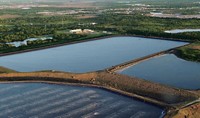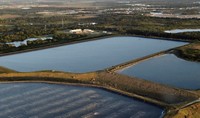Advertisement
Grab your lab coat. Let's get started
Welcome!
Welcome!
Create an account below to get 6 C&EN articles per month, receive newsletters and more - all free.
It seems this is your first time logging in online. Please enter the following information to continue.
As an ACS member you automatically get access to this site. All we need is few more details to create your reading experience.
Not you? Sign in with a different account.
Not you? Sign in with a different account.
ERROR 1
ERROR 1
ERROR 2
ERROR 2
ERROR 2
ERROR 2
ERROR 2
Password and Confirm password must match.
If you have an ACS member number, please enter it here so we can link this account to your membership. (optional)
ERROR 2
ACS values your privacy. By submitting your information, you are gaining access to C&EN and subscribing to our weekly newsletter. We use the information you provide to make your reading experience better, and we will never sell your data to third party members.
Environment
Assessing Swimming Pools' Environmental Cost
Environmental Impact: Pools can use five to six times more water and energy in arid climates than in more-temperate places
by Kellyn Betts
June 24, 2010

Jumping into a cool pool can be refreshing, but operating one takes a toll on the environment. The first-ever life-cycle assessment of swimming pools, published in Environmental Science & Technology (DOI: 10.1021/es100422s), shows that the pools with the biggest environmental footprints are in hot, dry places like Los Angeles and Phoenix. It also found that, not surprisingly, community facilities cause much less environmental impact on the environment than do backyard pools.
When Nigel Forrest noticed that backyard pools are ubiquitous in Phoenix, he and Eric Williams, both of Arizona State University's School of Sustainability, began work on a life-cycle assessment (LCA)—a common method to estimate cradle-to-grave environmental impacts of products and services—to bring to light the environmental costs of in-ground pool ownership in nine U.S. cities. The LCA model uses data such as climate conditions, length of swimming season, and physical attributes of pools to estimate consumption of chemicals, water, and energy, as well as CO2 emissions, of typical residential pools. It also factors in the environmental impacts associated with producing the necessary electricity and supplying the water. The researchers found that over the course of a pool's construction, use, and destruction, water and energy consumption were five to six times greater in the cities with the highest per capita pool use, including Los Angeles, Phoenix, and Tampa.
LCA expert Arpad Horvath, of the University of California, Berkeley, commends the study for its 'great depth and careful attention to the problem formulation, methodology, and data collection." He says that evaluating the environmental footprint of goods and services associated with conspicuous consumption, such as owning private swimming pools, is important to make consumers aware of their impacts.
'The impacts of private pools are pretty substantial anywhere they're operated," Williams says. However, pools in Seattle and New York City had the lowest impacts, the researchers found. The impacts were much higher in southern cities where pools are used year-round.
The pumps that circulate chemicals and aerate water to keep pools clean and free of algae are major energy consumers, Williams points out. The Department of Energy's Energy Information Agency estimates that private pool pumps accounted for 0.9% of all U.S. residential energy consumption in 2001. Williams and Forrest suggest that pool owners could save energy by running the pumps less frequently than recommended by equipment manufacturers.
But Williams admits that his own attempts to cut back pumping contributed to an algae problem in his backyard pool. He's still trying to optimize the pumping schedule, he says.




Join the conversation
Contact the reporter
Submit a Letter to the Editor for publication
Engage with us on Twitter